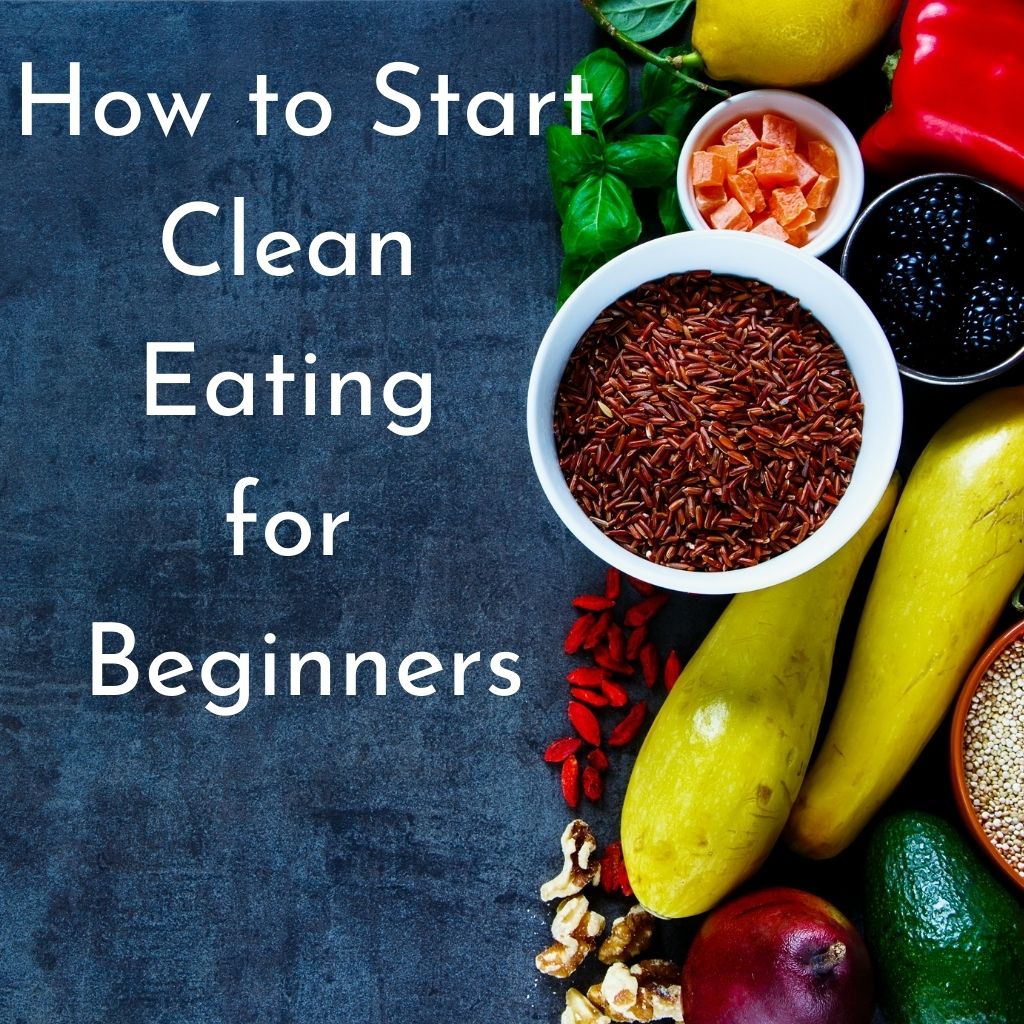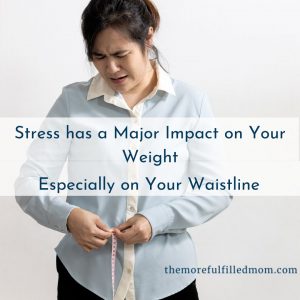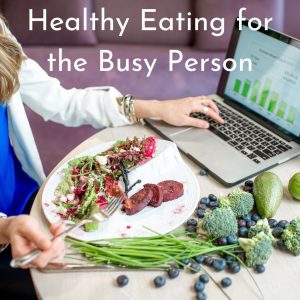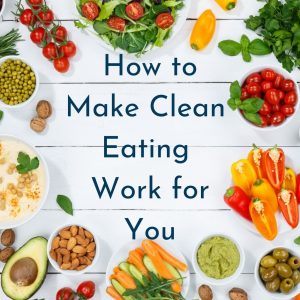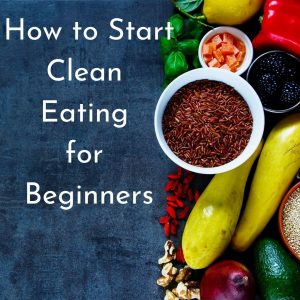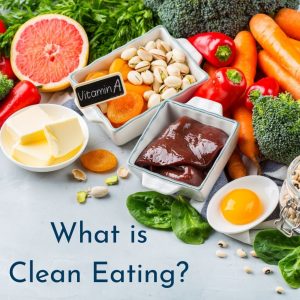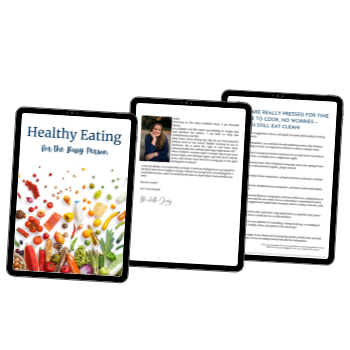So you found out about clean eating and want to try it? Clean eating for beginners has to start with where you are at.
Are you starting on a standard American diet of fast food? Do you already eat mostly fresh foods but want to take it to another level? or somewhere in between?
You also need to look at what you think about food and why you want to eat a more clean food diet.
Are you low on energy from packaged foods and want to have more energy? Do you feel bloated after a steak but love steak and want to see if there is a better steak that doesn’t make you feel so bad? Are you wanting to be healthier and are looking for the best quality foods available for you in your area and for your budget?
Warning
If you are trying to do Clean Eating or any other named diet and use phrases like “I can only have …” and “no one should eat …” and “this food is bad.” Then be aware of all or nothing thinking. Often times when you follow a plan and try to do it perfectly, it leads to food dysfunction or eating disorders. The right eating lifestyle for you is going to vary from others based on lifestyle, food history, and environment to name a few. There is no perfect way of eating, just what works best for you, your body, and your lifestyle. Everyone is unique in what works for their body and needs.
What’s Next After Knowing Your Starting Point and Why?
So you asked yourself why you want to eat clean and where you are starting from. Now you need to decide what changes you want to make.
Do you want to make big changes and do it all at once or take small steps? Understand that small steps will be easier to be consistent with and maintain. But if you have enough pain associated with your current state of health, you may be able to make big changes and have them stick if you are consistent and have support to keep you on track.
Examples
You want more energy and are on a standard American diet. Small steps would be to start making one more meal at home a week. Big changes may be making 75% of meals at home.
You get bloated when you eat conventional steak and eat mostly homemade meals. Small steps would be to try a grass-finished steak. Big changes might be an elimination diet removing all beef for 2 to 3 weeks and then adding back in grass-finished beef to see if you have the bloated reaction again.
You want to get healthier and have the best quality foods. Small steps could be finding a farmers’ market in the area to go to during the summer. Big changes might be making a garden and growing your own food.
After Choosing Your Small Steps or Big Changes?
Next is to implement your plan. Whatever that small step or big change is do it. Small steps will be easier and may just be a couple of actions.
Decide which meal (day and time of day) you want to make at home. Purchase the groceries for that meal. Make that meal. Enjoy Eating it.
Big Changes will require a plan and time to implement the plan.
Decide how many meals to make at home. Create a meal plan for the meals you will eat at home. Make a grocery list for all meals for the week. Shop for the groceries. Prep anything that can be prepped for the meals. Have all ingredients each day for the meals. Decide if you can make more than one meal or type of meal for the week. Make any meals you can make ahead (such as overnight oats or egg cups to be used all week for breakfast.) Plan time to make meals every day. Make each meal. Enjoy your meal.
As you can see bigger changes can be a larger process that takes more planning and has more steps. Smaller steps can be more simple. Like, have an apple 3 days a week for lunch. Buy 3 apples. Bring apples for lunch.
3 Steps –
1. Know Your Why and Starting Point.
2. Choose a small step or big change.
3. Plan and Implement.
Ideas for Foods to Add to Eat Clean
Start slow and choose the most nutritious foods that you have available to you and that fit within your budget.
Fruits and Vegetables
Look at the EWG list of Clean and Contaminated foods call the Dirty Dozen and Clean 15. This list will indicate the current year’s fruits and vegetables that have the highest levels of contamination like pesticides when you get the commercial variety. It is very important that you wash the most contaminated foods thoroughly or get the organic version that will not have pesticides.
Some fruits like strawberries retain some pesticides in the fruit that cannot be washed off. Always purchase organic strawberries if you can. Notice the clean fruits and vegetables like avocados in which you can wash the skin and then open it up and since you do not eat the skin it is not a problem and the commercial version is fine.
Fruits
Start with fruits you are most familiar with like apples, bananas, grapes, and oranges. Then expand your choices with peaches, pineapple, mangos, and papaya especially when they are in season. Most fruit is better and costs less in season. Having the whole fruit is best but also consider frozen or dried fruits when they are out of season.
Vegetables
Many non-starchy vegetables are low in calories and don’t contribute significantly to any macro. What they do have is micronutrients that help with essential body functions. It is great to include these in your life. These include vegetables like leafy greens, cauliflower, broccoli, zucchini, cucumber, beets, cabbage, onions, peppers, and carrots. There are more just look for vegetables that are lower in calories and high in water content. Also sea vegetables and herbs.
Fruits that act the same way include melons, berries, lemons, and limes.
Starchy vegetables provide a significant source of carbohydrates for your meal. They include vegetables like potatoes, corn, peas, beans, legumes, lentils, sweet potatoes, yams, yucca, and squashes like acorn, butternut, and spaghetti. If you are low on energy then a starchy vegetable may help.
Proteins
There are many ways to get proteins from animal and plant sources. When eating clean you are looking for proteins that are lean and nutritious. Typically that means looking for meat and dairy that are grass-fed and free-range and fish that are sustainably caught.
Look for grass-fed beef, steak, bison, venison, and lamb. Look for free-range eggs, chicken, turkey, and pork. There are fatty fish like salmon, sardines, etc., and lean fish like tuna, cod, tilapia, pollock, etc. Additionally sustainably caught seafood including shrimp, oysters, clams, lobster, and crab. Whatever seafood you have look for it to be sustainably caught.
Some plant-based proteins include quinoa, buckwheat, beans, legumes, lentils, green peas, pea proteins, edamame, and tofu.
You get some protein from dairy. Try for organic and grass-fed sources of cow, goat, or sheep’s milk. There is also cheese, cottage cheese, yogurt, butter, and cream.
Grains
When looking for grains try to find whole grains. Some examples would be brown rice, quinoa, millet, amaranth, oatmeal, teff, and spelt. One way to ensure you are getting the benefit of the whole grain is to mill it yourself. I have had a mill for 4 years and we make our pizza dough, bread, and muffins from freshly milled flour. It is a nice alternative to flour from the shelf since freshly milled flours have all their nutrients and the whole grain stores for a long time without spoiling if stored properly.
When getting packaged grains like bread, pasta, crackers, and cereal look for products made with whole grains and ingredients you are familiar with.
Healthy Fats
Most often you will use fats in cooking oils, sauces, butter, and dressings. Some options for healthy fats include avocados, olives, cacao, coconut, tahini, peanuts/ peanut butter, nuts/ nut butter, and seeds. When choosing oils pay attention to how they would be processed or overly processed to get the oil. Avocado oil, olive oil, coconut oil, flaxseed oil, and sesame oil are more plant-based oils. Grass-fed butter is also a good option.
This is not an exhaustive list of things to have when you are trying to eat more cleanly.
Remember that what you eat is a choice and as long as you like your choice it is no one else’s business. Whether you choose small steps or big changes toward a healthier body, they are all great steps. There will be foods that may be very nutritious that you don’t like and that is ok. Go with what makes your body feel good and brings you closer to the why you are after.
If you would like support and encouragement with small steps or big changes for your health consider having a coach to help you. Get on a free consultation call to find out if we work well together.

